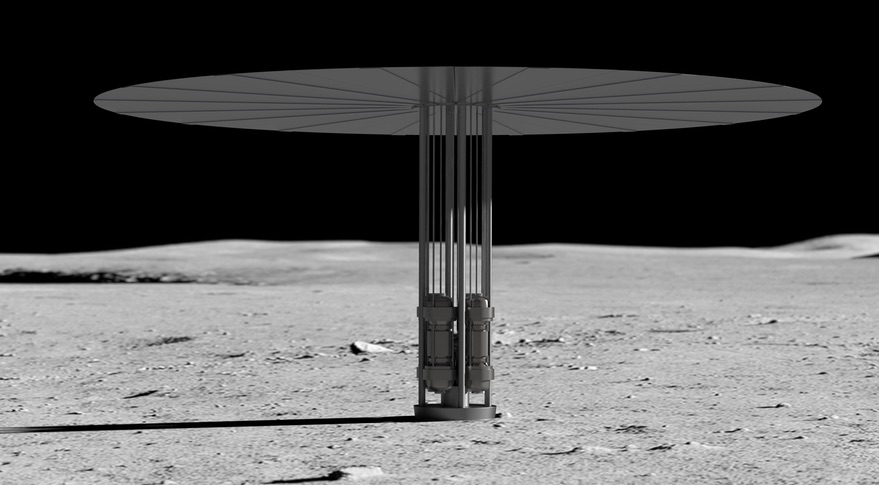NASA to seek proposals for lunar nuclear power system
NASA to seek proposals for lunar nuclear power system

WASHINGTON — NASA and the Department of Energy will seek proposals for industry later this year for the development of a compact nuclear power system that can support the agency’s long-term lunar and Martian exploration plans.
In a Sept. 1 presentation to the Technology, Innovation, and Engineering Committee of the NASA Advisory Council, agency officials said they expected to release a request for proposals in late September or early October for the first phase of its Fission Surface Power effort.
That project seeks to develop a 10-kilowatt fission power system that could be placed on the moon as soon as 2027, providing power to enable long-term lunar surface activities, especially during the two-week night when solar power is not an option.
“It’s an enabling capability for a sustained lunar presence, particularly for surviving a lunar night,” said Anthony Calomino, nuclear systems portfolio manager in NASA’s Space Technology Mission Directorate, at the meeting. “The surface of the moon provides us an opportunity to fabricate, test and flight qualify a space fission system.”
NASA and the Department of Energy (DOE) have been working together in recent years on a space nuclear power project called Kilopower, which featured a demonstration of the technology at the Nevada Test Site in 2018 with a one-kilowatt reactor. That project used highly enriched uranium (HEU), which enables an efficient and lightweight reactor.
However, the use of HEU raised concerns in the nuclear nonproliferation community, who argued that it could set a precedent for the renewed production of HEU, which can also be used in nuclear weapons. Calomino said DOE is now considering the use of low enriched uranium (LEU), which does not have the nonproliferation issues but is not as mature technically as HEU approaches and would increase the mass of the reactor.
“LEU solutions have now been included in our trade space for that reactor system,” he said. That includes high-assay low enriched uranium, or HALEU, which in DOE studies can provide the same amount of power as an HEU reactor with a mass penalty of a couple hundred kilograms.
DOE issued a request for information for the Fission Surface Power effort in July to seek ideas from industry on how they would develop such a power system. The agencies held an industry day Aug. 20 that attracted more than 180 participants from companies in the nuclear industry, such as BWXT and General Atomics, as well as aerospace companies like Blue Origin and Lockheed Martin.
Calomino said the agencies hope that the ongoing request for information and industry day will help form the teams of companies needed to develop the fission power system. “This is a new capability. The system is rather complex. There isn’t one provider that could be a one-shot do-all kind of thing,” he said. “Partnering is important, and we wanted to give ample time for the aerospace and nuclear industries to identify common needs and common capabilities, and build up those teams.”
DOE will lead the procurement in cooperation with NASA, issuing a formal request for proposals by early October. The agencies expect to make several awards for phase one to work on preliminary designs that would be completed by the end of 2021. A second phase, starting in early 2022, would select one company to develop a flight unit that would be ready for launch in 2027.
One option for the procurement he said is being considered is cost-sharing of the project with industry. That could allow companies to propose a reactor that meets the mass limits of the project but can generate more than 10 kilowatts. “They would then look at selling that additional power to other users,” he said.
Comments
Post a Comment